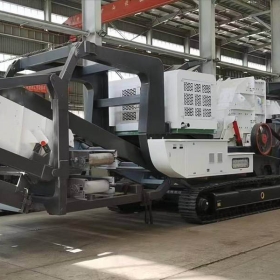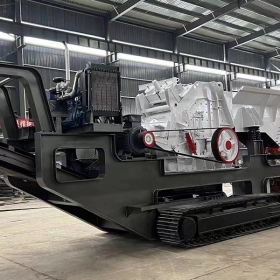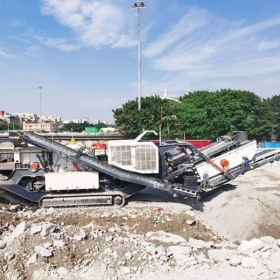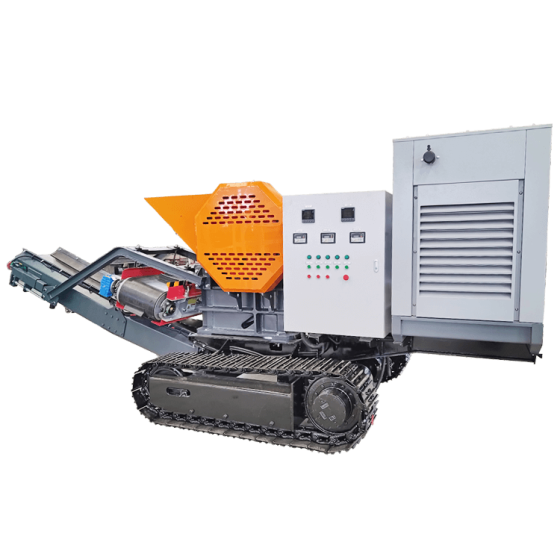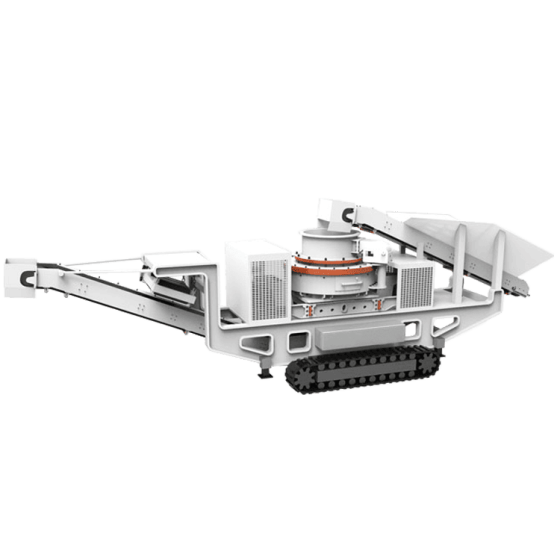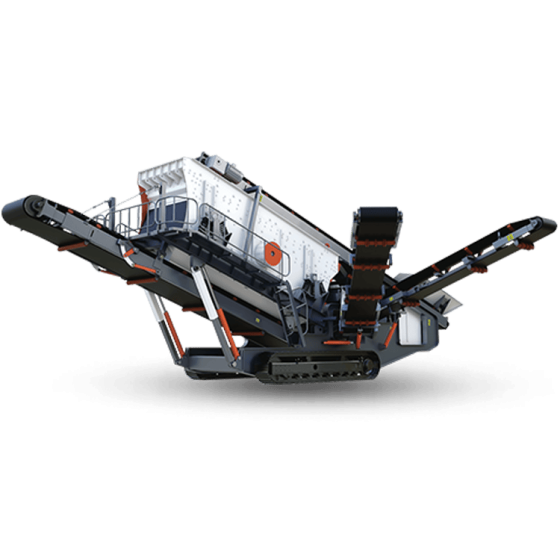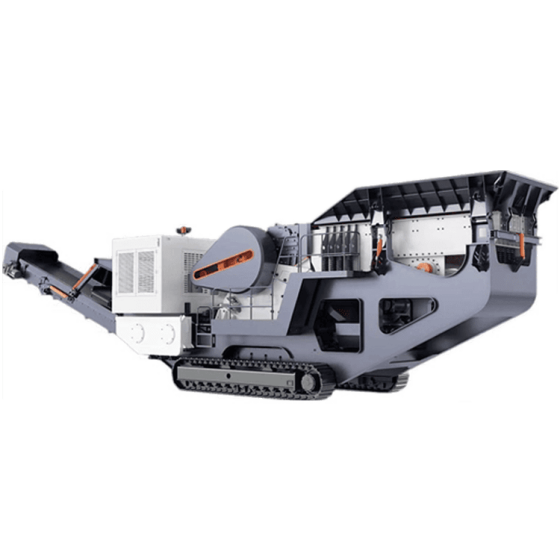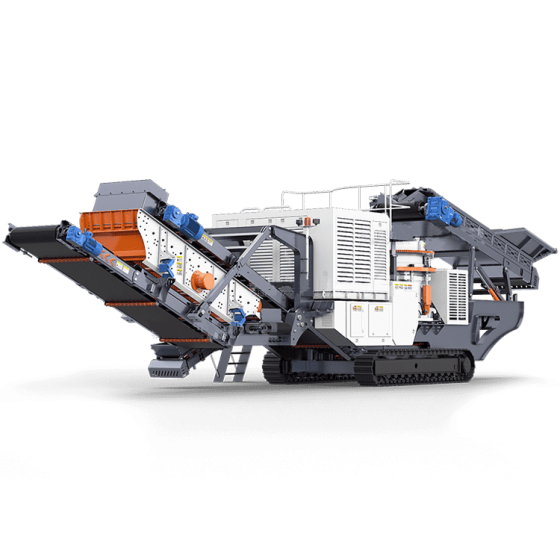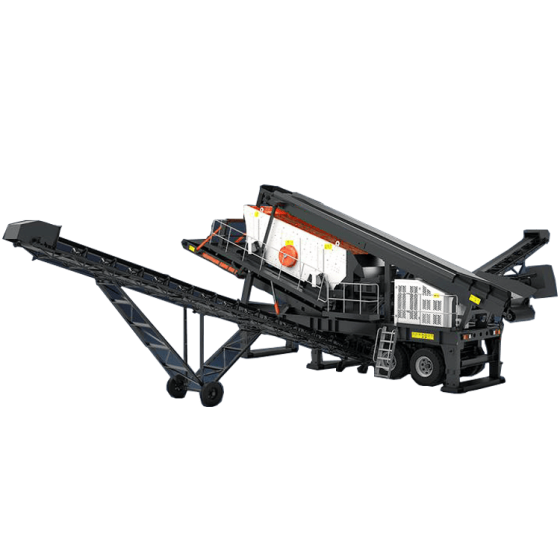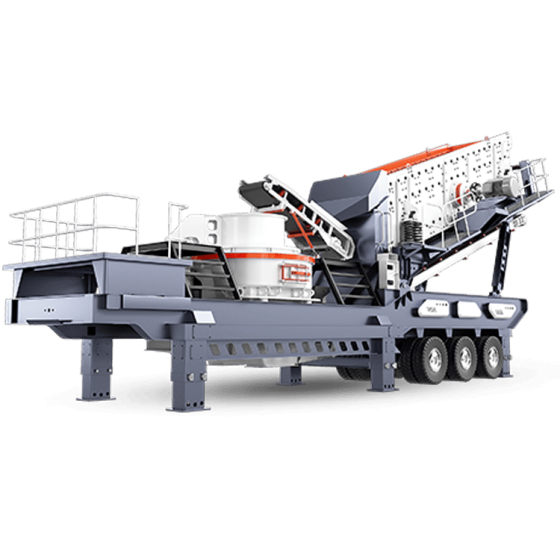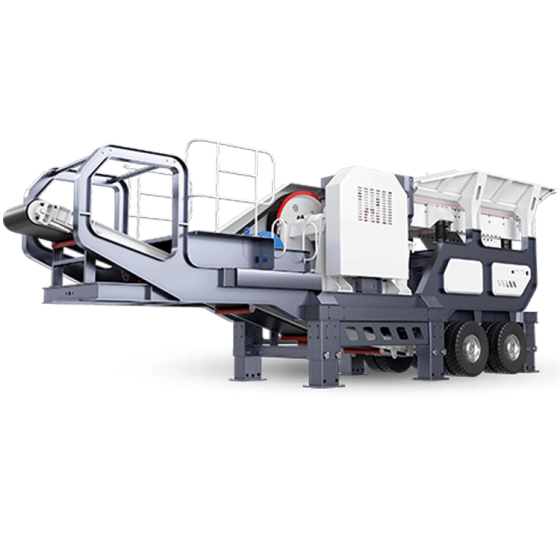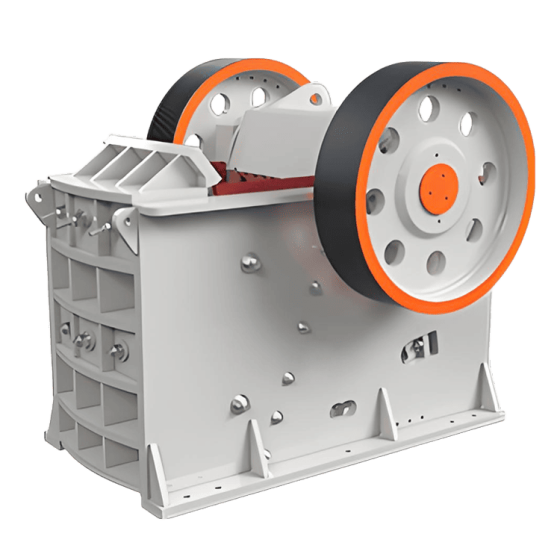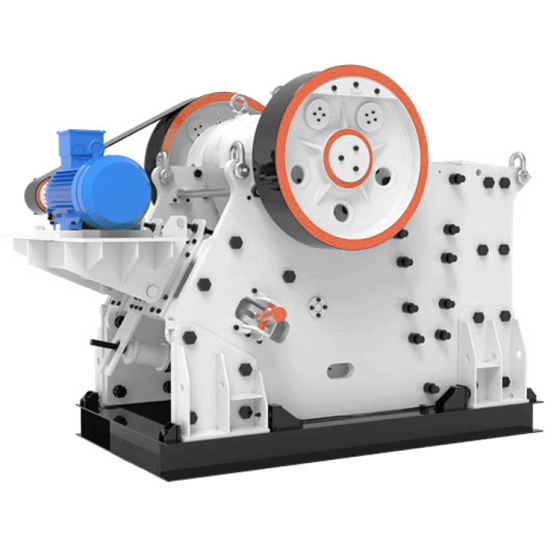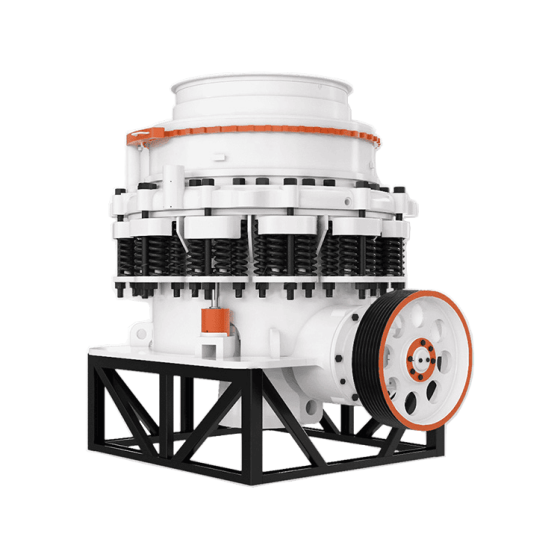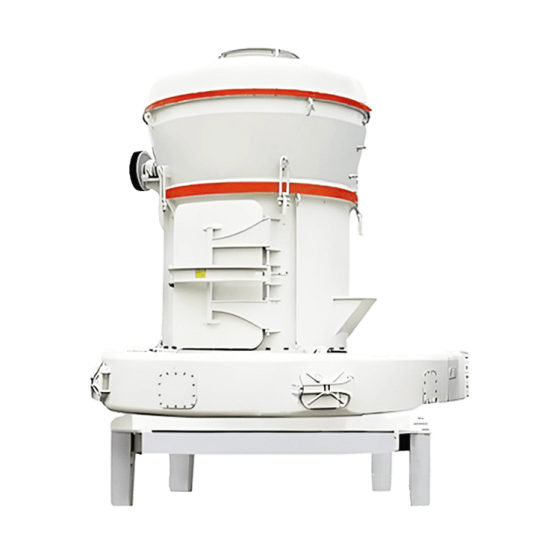Tracked Mobile Impact Crushing Plant is a mobile mining and construction waste treatment equipment that integrates crushing, screening and conveying functions. It is driven by a crawler chassis, has high maneuverability, and can be quickly transferred to different work sites. It is widely used in construction waste recycling, mining, road construction and other fields. The core part is the impact crusher, which uses the high-speed rotating rotor to impact the material to achieve efficient crushing.
Processing capacity: 50-500 tons/hour
Maximum feed size: ≤800mm
Discharge size: 0-50mm (adjustable)
Power configuration: diesel generator or external power supply
Through modular design, the equipment can also form a mobile production line with jaw crusher, screening station, etc. to further expand the application scenarios.
Technical Features
1. Be flexible
The crawler chassis supports on-the-spot turning and climbing (up to 20°), adapting to narrow or rugged sites and reducing material transportation costs.
2. Efficient crushing
The impact crusher has strong impact force and the finished product has uniform particle shape (mostly cubic), which is suitable for aggregate production.
3. Multi-function adaptability
It can process medium-hard and lower-hard materials (such as limestone and concrete waste), and the discharge specifications can be adjusted by replacing the screen.
4. Intelligent Integration
Automated control reduces manual intervention and monitors equipment operating status (such as bearing temperature and vibration) in real time.
5. Environmental protection and energy saving
The closed structure is equipped with a dust removal device to reduce noise (<75dB) and dust pollution; some models support hybrid power.
6. Compact design
The integrated structure saves space and enables quick operation (deployment within 30 minutes).
Application Scenario
Recycling of construction waste: crushing concrete, bricks and tiles to generate recycled aggregates.
Mining: primary or secondary crushing in small and medium-sized stone factories.
Urban demolition projects: Process waste on site to avoid transportation pollution.
Emergency rescue: quickly reach the disaster area and deal with building ruins.
 crusherfactory.com
crusherfactory.com


